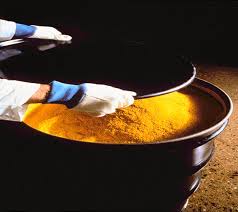Published on Sunday April 01 2012 (AEST)

The mid-term outlook for the uranium sector has again been reinforced, with research firm Resource Capital Research (RCR) reporting that the emergence of strong strategic investor support and acquisition activity in the uranium sector proved that point.
In the long-term, the uranium market fundamentals were considered solid, RCR said, with growth in nuclear power reactors expected in several countries, particularly China and India.
There were currently some 80 nuclear power reactors expected to be commissioned globally by 2017, with 61 currently under construction and a further 491 planned or proposed.
“Nuclear remains a key aspect of energy policy for many countries including China, India, Russia and the USA. There are currently 491 nuclear energy reactors planned or proposed globally, 9 more than prior to Fukushima,” said RCR MD John Wilson.
“The key lesson from Japan’s nuclear crisis points to the need for, and benefit of, greater transparency and accountability of democratic governments and their institutions, and stricter oversight of government agencies in general; in this case nuclear agencies specifically,” said Wilson.
He said that since the Fukushima incident had occurred over a year ago, the impact on the uranium sector had now been factored in, adding that the market was expected to be broadly balanced for the next 12 to 18 months.
RCR reported that uranium equities have staged a recovery over the past six months. A broad sector index, the Merrill Lynch Uranium Equity Index was up 37%, having bottomed at 202 on October 4, 2011.
The uptrend since then, however, has been volatile, RCR stated. The index was down 5% in the last month, up 20% in the past three months, and down 38% for the 12 months.
Over the past month, the Australian uranium majors have outperformed their Canadian peers with the Australian stocks up 0% to 5% and the Canadians down 5% to 15%. With the exception of ASX-listed Energy Resources of Australia, the global majors in the above table have performed strongly in the past six months.
Wilson noted that while the sector outlook had stabilized, there remained the uncertainty around when Japan will restart its reactors. At present, only one of its 54 reactors was operating with the rest shut down for maintenance or safety reviews.
Buying opportunities continue to emerge driven by perceptions of a floor to the uranium spot price holding at around $50/lb, and strong strategic investor support and acquisition activity at the large end of the market, RCR reported.
The long-term contract uranium price is $60.00/lb, down from $62.50/lb at the end of November last year and $73.00/lb at the end of February last year.
“While it may trend a little weaker in the near term, we expect the contract price to remain around the $60/lb to $70/lb mark. This level should support development decisions at a number of advanced uranium development projects, particularly in Namibia,” said Wilson.
The World Nuclear Association has forecast a modest market surplus in 2013 and 2015, and a modest deficit in 2014, which RCR said would lead to an overall balanced market through 2015.
Key factors that could impact the balanced market outlook include disruption and delays to existing and new projects, and the extent of new commercial deals for secondary supply post HEU in 2013.
Click Image To Access Uranium Stocks Australia




